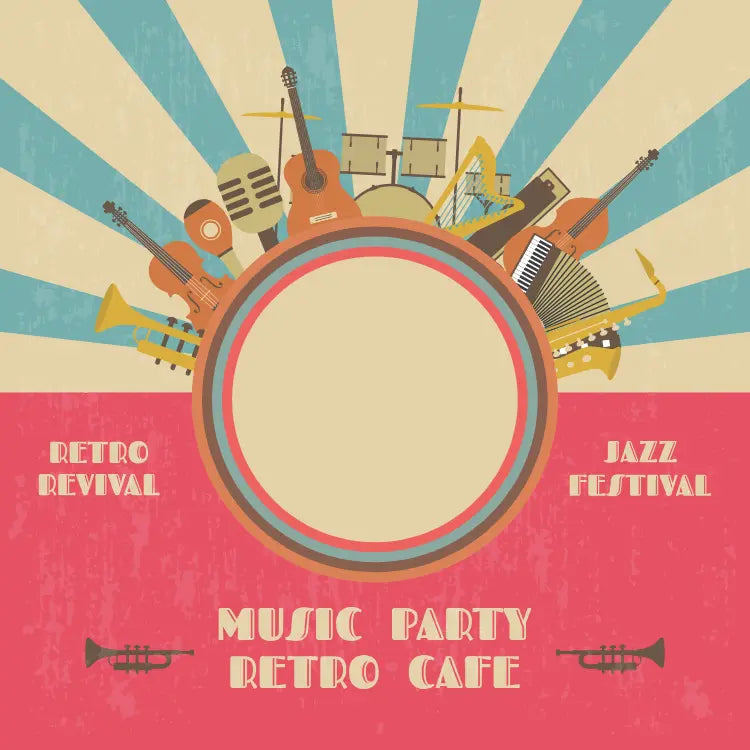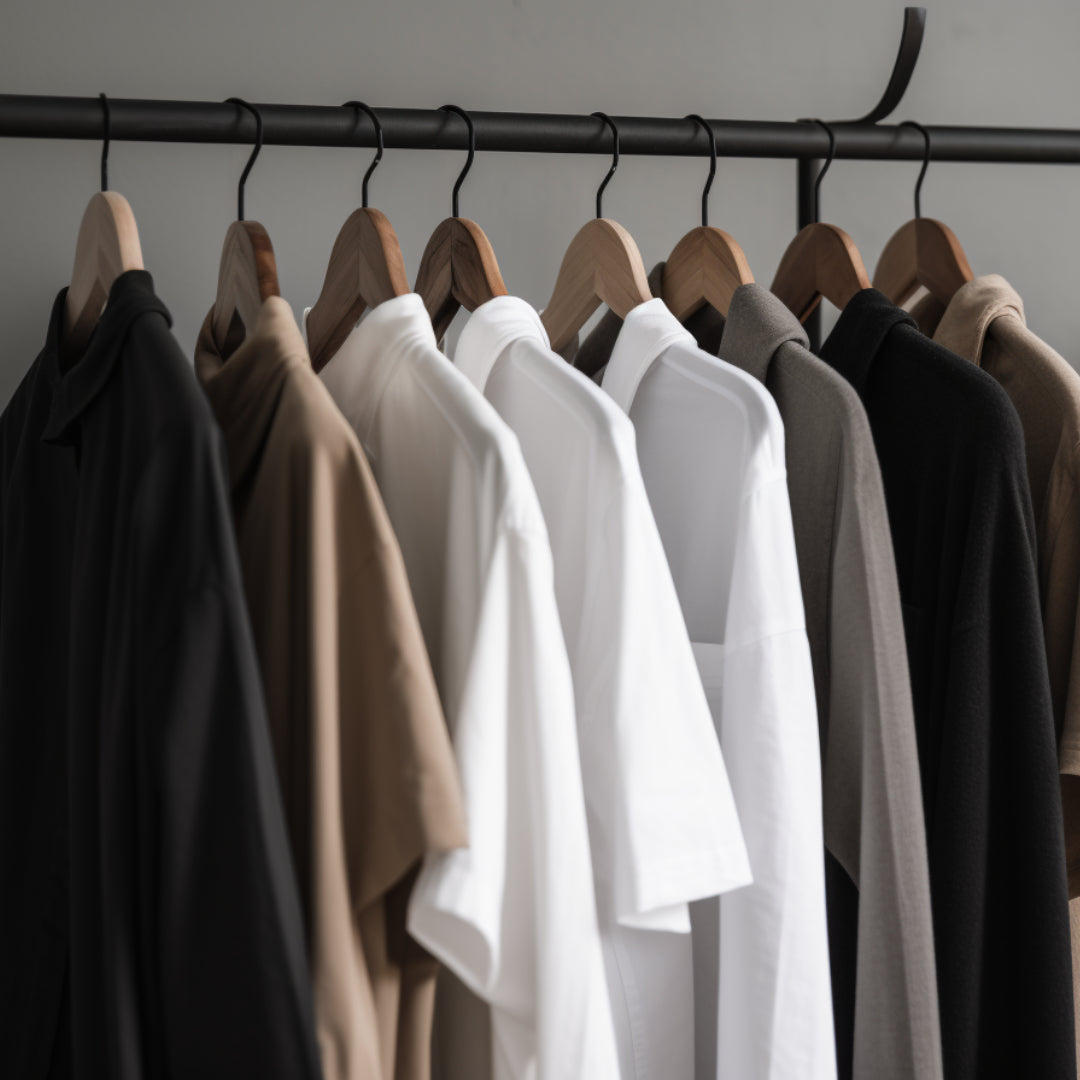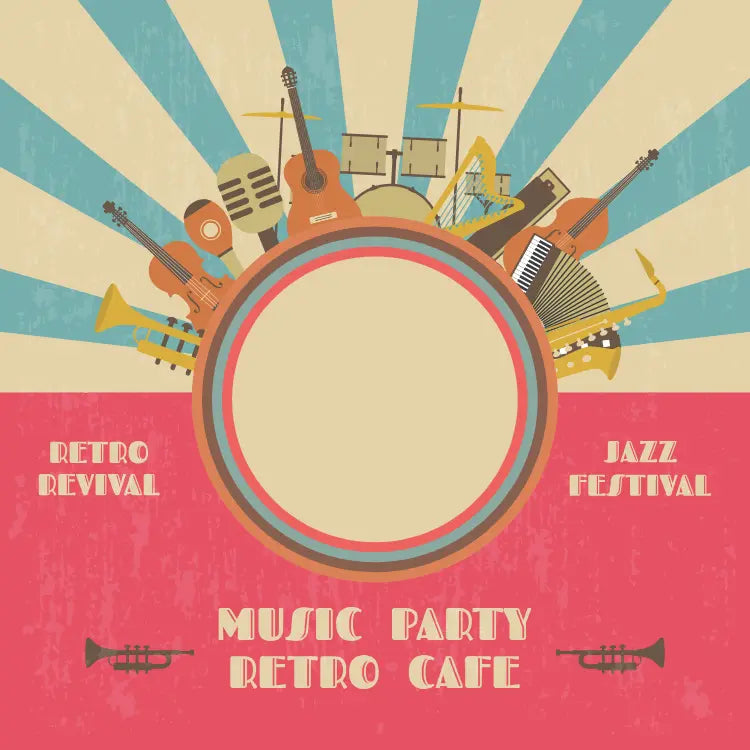Transform Your Event Poster into a Must-Have T-Shirt with These Simple Tips
Turning an event poster into a t-shirt design that sells can be a great way to promote your event and make some extra money. As event organizers, we've done this many times over the years with our conferences, festivals, and other happenings. It does take some work to get the design and production right, but when done well, these t-shirts can become popular memorabilia long after your event ends.
In this article, we'll walk you through the key steps we've learned for transforming event posters into hot selling t-shirts.
Choose the Right Poster to Turn into a Shirt
Not every event poster is well-suited for turning into a t-shirt design. The posters that tend to work best have:
- A simple, iconic design that is easily recognizable. Complex posters with tiny details generally don't translate well into t-shirt graphics.
- Bright, contrasting colors that will stand out on a shirt. Dark posters with muted colors usually don't make for good t-shirt designs.
- An interesting, eye-catching subject. Music posters featuring artists and bands often sell better than posters centered only on text.
So as you think about event posters that could be transformed into t-shirt designs, look for ones that are graphically compelling while still being relatively simple in their layout.
Secure the Necessary Rights and Permissions
Before taking any poster design and turning it into a t-shirt for sale, it's crucial that you secure the proper rights and permissions. There are a few key things to consider here:
Copyrights:
If your event poster includes copyrighted content like band/artist images, song lyrics, logos, etc, you'll need permission from the copyright holder(s) to reproduce this content on a commercial t-shirt.
Trademarks:
Similarly, if the poster includes trademarked names, logos, or branding, you'll need explicit permission to use these on merchandise.
Image/Design Rights:
Even if you or your organization created the original event poster, you should review any contracts with your graphic designer or artist to ensure you have print rights for reproducing the poster design on t-shirts. If not, you may need to negotiate additional rights.
Model Releases:
If there are people depicted in the poster photo/design, confirm you have model releases allowing commercial use of their likenesses.
Securing these rights and permissions can take some time and effort, but it's an essential legal step to avoid allegations of copyright/trademark infringement down the road. Many t-shirt printers will also require proof of proper rights before producing your shirts, so it's good to get this squared away early on.
Choose the Right T-Shirt Style and Fabric
Not all t-shirts are created equal, so you'll want to put some thought into choosing shirts that will show off your design well and sell better:
Style:
Crew neck and v-neck t-shirts tend to work best for displaying graphic designs compared to scoop necks, tanks, long-sleeves, etc. If you have a unisex design, consider offering both men's and women's cut shirts.
Fabric:
Soft, mid-weight cotton styles typically sell better than ultra lightweight or tri-blend options. The heavier fabric provides a better canvas for the design.
Color:
White or light colored shirts allow the graphic to pop better than dark shirts where details can get lost. Heather gray can work for some designs too.
Fit:
Choose a flattering, current fit - slimmer fits are generally more popular today among both men and women compared to boxy oversized shirts.
It's smart to order a few test samples in different styles to see which flatters your design best before placing a large order.
Choose Quality Screen Printing Over Digital Printing
When it comes to printing t-shirt designs, screen printing definitely outshines digital printing and transfers. The results look more professional, the prints are much softer/breathable to wear, and they better withstand washing.
Screen printing does have higher upfront costs for burning screens, but the quality is worth it - especially for an iconic design you want fans to wear for years to come. Plus those upfront costs can quickly be recouped by the higher profit margins.
If interested in embroidered shirts rather than prints, that is also a great option for event t-shirts - just ensure your design translates clearly into an embroidery format.
Size Up the Artwork Properly
One of the trickiest parts of turning a poster into a t-shirt design is sizing up the artwork correctly. Posters feature huge graphics while t-shirt designs must be much smaller to fit on apparel.
Here are some tips for sizing properly:
- Scan poster at high resolution or obtain original digital files from designer
- Remove any text/info not needed on the shirt
- Simplify any intricate details that won't render clearly when sized down
- Scale design to final size needed for t-shirt print position (usually 10-14 inches wide for front chest prints)
- Make sure key elements like faces aren’t too small in final version
You may need to crop or reposition certain elements in the composition so the key focal points stand out at the smaller t-shirt size. Having an experienced graphic designer handle the resizing/reformatting is extremely helpful.
It’s also smart to print some test transfers at actual size to evaluate whether details show up clearly before going into full production.
Add Supporting Design Elements
In addition to resizing the poster artwork for the t-shirt, you’ll also want to incorporate other design elements to complete the shirt graphic.
Here are some things to consider adding:
Event Name, Logo, Date:
Include these visual details somewhere on the shirt even if they aren’t part of the original poster design. This helps identify when and where the event took place.
Location:
Consider adding your event’s location or venue iconography like city skylines, stadium views, local landmarks, etc.
Customized Typography:
Use some interesting fonts that reflect the event’s style for the added text elements rather than basic default fonts.
Decorative Graphics:
Bands, lines, abstract shapes, and other decorative graphics like music notes can help fill in empty space and tie the design together.
Distressing:
Adding filters like noise or distressed textures can give the shirt a cool, grungy, rock n’ roll vibe.
Take some time to brainstorm supporting design elements to take your t-shirt graphic to the next level.
Figure Out Sizing and Quantities
One of the early decisions you’ll need to make is what sizes and quantities of shirts to order. This can impact the pricing you’ll pay per shirt.
For sizing, we recommend offering both men’s and women’s cuts in small through 3XL. Going up to 4XL is smart if you have a music event where fans may wear oversized.
In terms of quantities, think about your event attendance as an initial benchmark. Order more of the most common sizes in your demographic (usually women's small through large and men’s medium through XL). Then supplement with smaller quantities of less common sizes.
Printing fewer than 36 shirts per size may increase your per shirt pricing, while ordering 72+ can qualify you for volume discounts from some printers.
If concerned about getting stuck with excess inventory, start conservatively with the shirt order quantities and you can always order more if initial batches sell out quickly.
Price Your Shirts Properly
Figuring out effective pricing for your t-shirts requires finding a sweet spot between covering production costs and making them affordable for fans.
As a general guideline, consider pricing shirts at about 2-3X your actual per shirt cost. This covers your upfront production expenses while giving you a nice profit margin.
For example, if your all-in cost to print shirts is $8 each, consider pricing them in the $16 to $24 range. For lower per-unit costs, you may be able to push pricing somewhat higher.
Also research pricing for similar event t-shirts and artist merch shirts to benchmark against. Exclusive designs can often command slightly higher pricing too.
Promote Those Tees!
You could have the coolest t-shirt designs ever, but if fans don’t know they exist you won’t sell many! Promotion and marketing is key.
Here are some of the ways we’ve successfully promoted event t-shirts:
- Create t-shirt pre-order campaigns on platforms like Bonfire to start driving sales 3-6 months pre-event. This also helps gauge demand to size your order.
- Show off the shirts visually with images/videos on event websites, social channels, email blasts, etc.
- Spotlight the t-shirts in event communications and announcements as key merch.
- See if any event speakers, performers, sponsors, or partners can help cross-promote the shirts to their followers.
- If you have any celebrity guests, see if they would be willing to autograph shirts for a charity auction.
- Have your event MC or host wear or showcase the tee on stage to build intrigue. Toss some free shirts into the crowd to amp up excitement.
- Use social contests and giveaways to award event t-shirts and drive awareness.
- For multi-day events, have staff wear the shirts each day to raise curiosity and interest.
Get creative with your marketing tactics and don’t be afraid to ask others to lend their channels to help spread the word too!
Sell Those Tees Onsite!
At least 50% of your t-shirt sales will happen at the actual live event, so make sure you are ready to capitalize on all those impulse purchases!
Here are some tips to drive onsite sales:
Visible Merch Booths:
Place t-shirt selling stations in high foot traffic spots near entry points, key attractions, food areas, etc. Use banners/signage to catch eyes from afar.
Roving Sellers:
In addition to fixed booths, have sellers roaming the event with shirts to catch fans in the moment when excitement is peaked.
Bundling Deals:
Offer bundles like 2 shirts for $30 or shirts + posters together to upsell. Bundles make great gifts too that friends can split.
Accept All Payment Types:
Have ability to accept cash, cards, mobile payments etc. ATMs onsite are a plus.
Event Exclusive:
Market shirts as exclusive event-only merch that can’t be purchased online later. Scarcity drives demand.
Size Swapping:
Make allowances for people to easily swap sizes during the event in case the one they bought doesn’t fit right. This reduces friction to purchase.
If your t-shirts have some real wow factor to them, all of these tactics will ensure you ring up robust sales during those magical days your event is running live. Capture that momentum!





